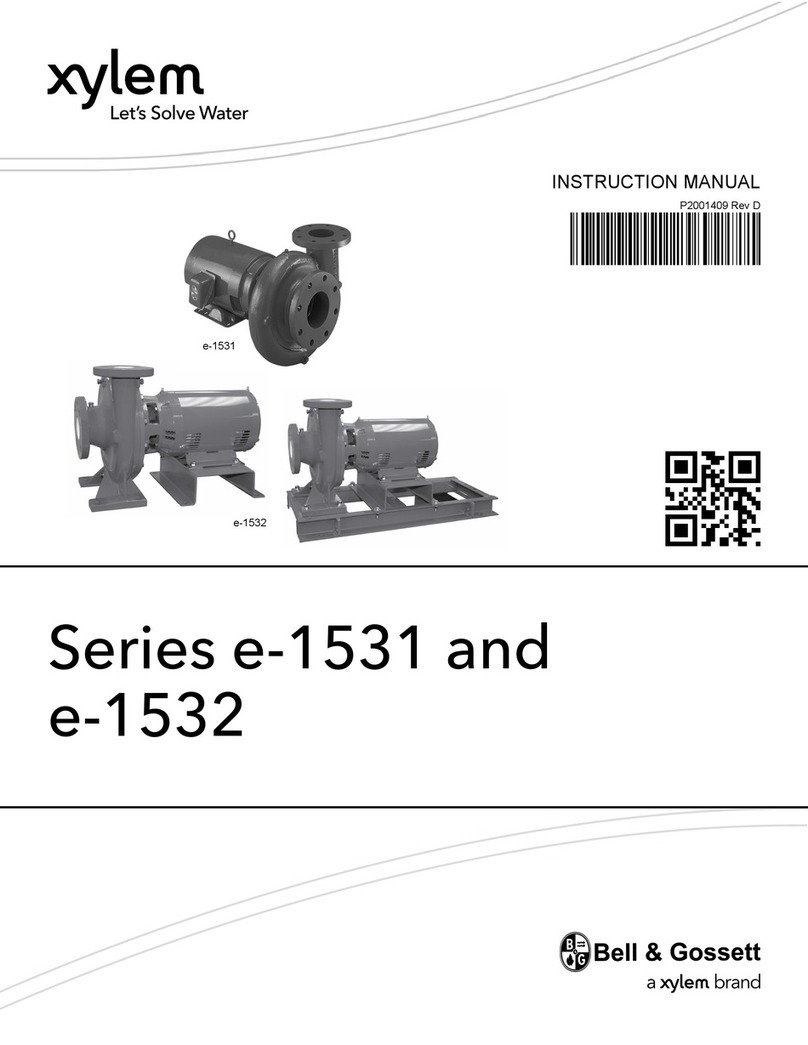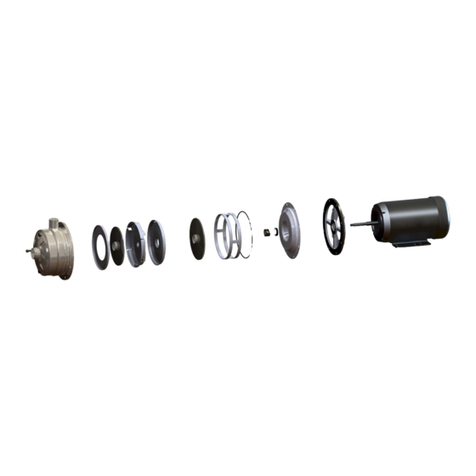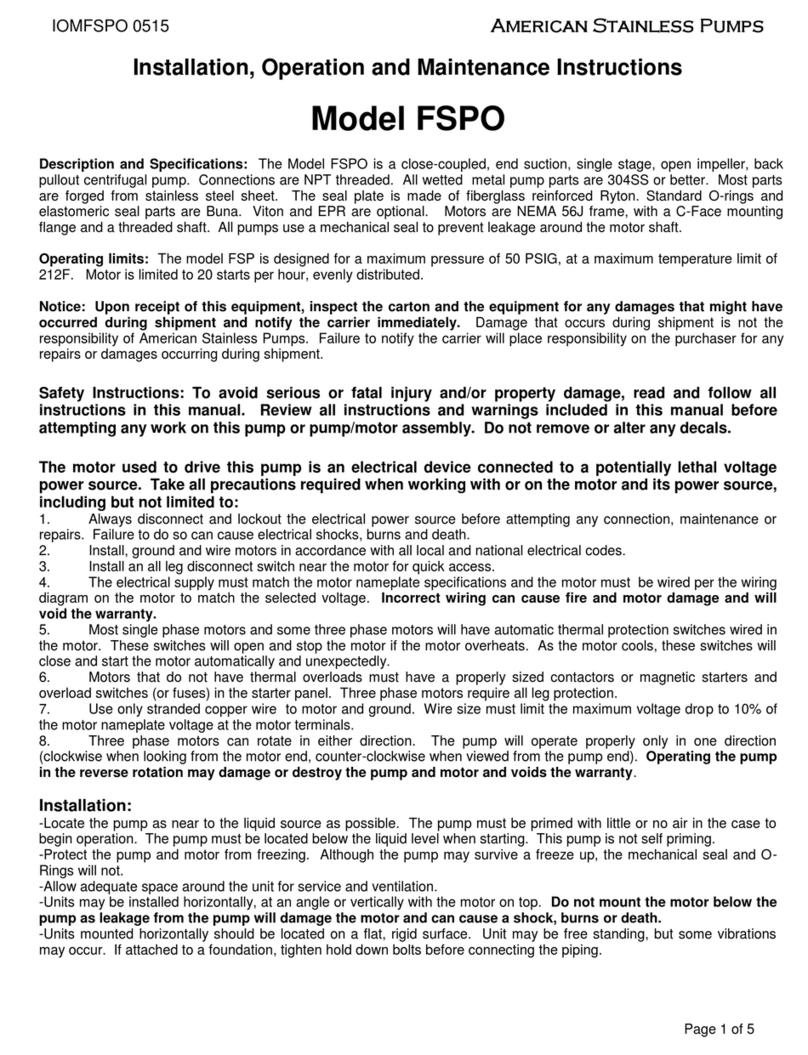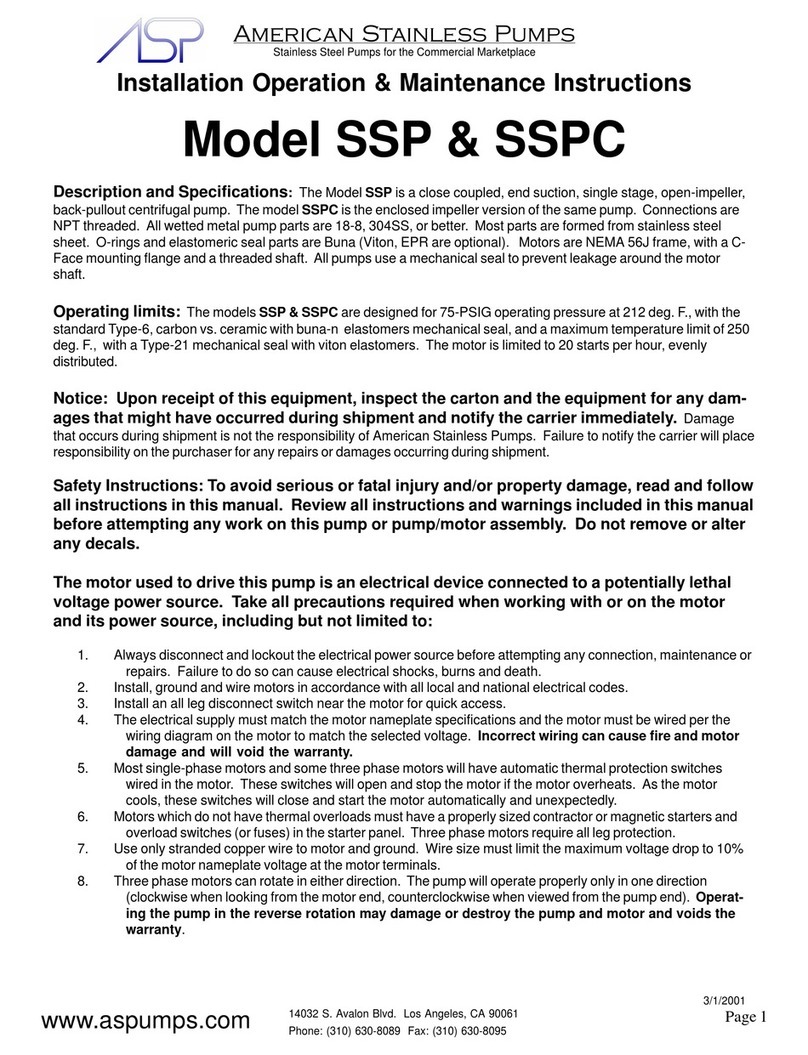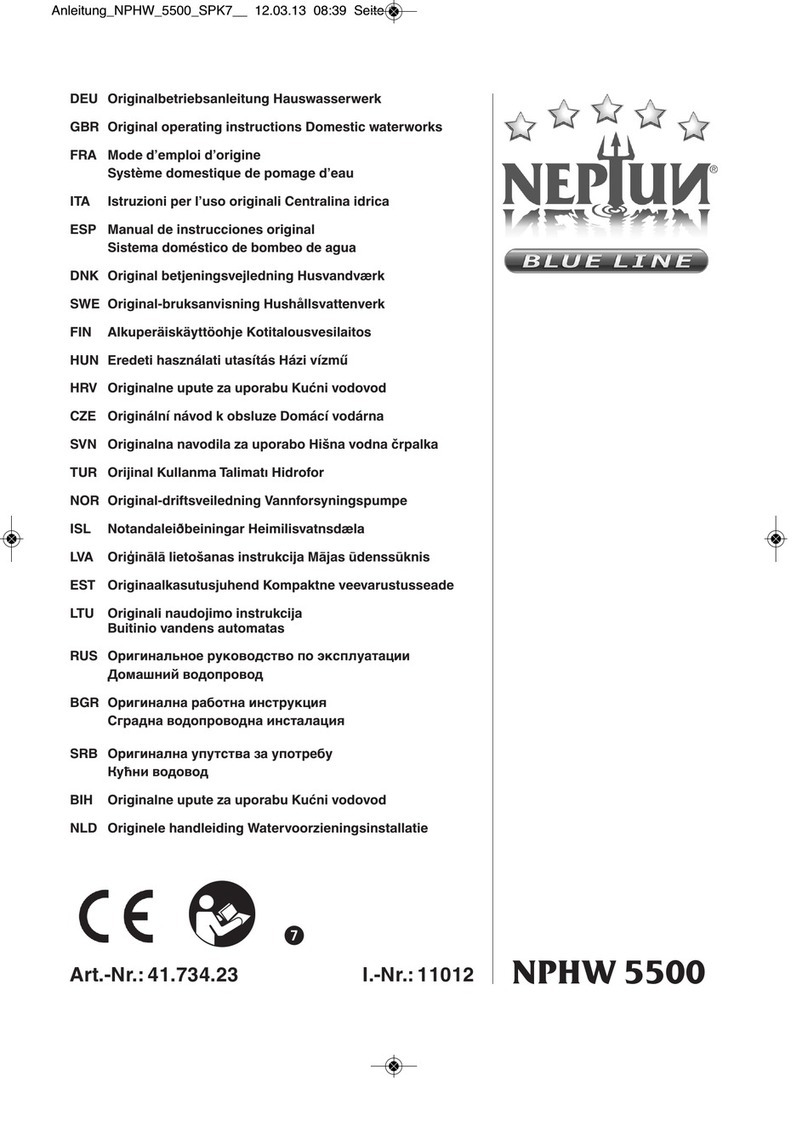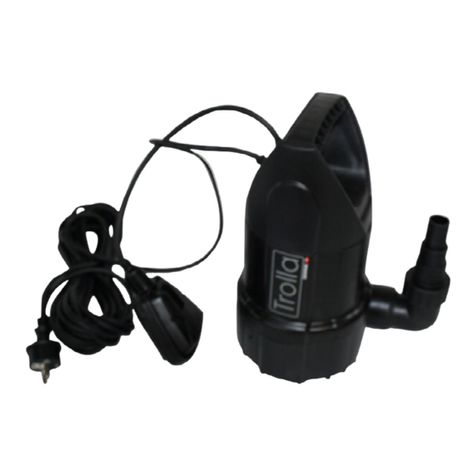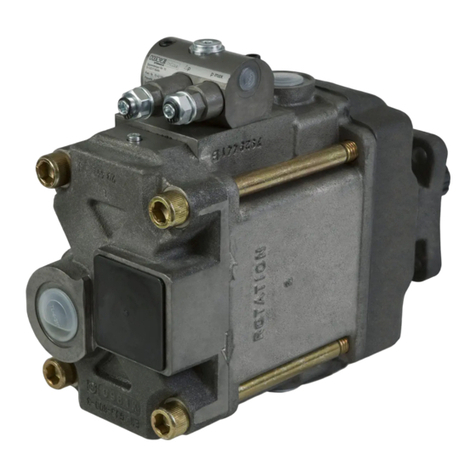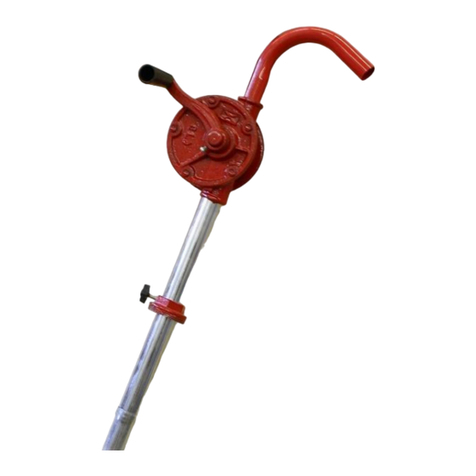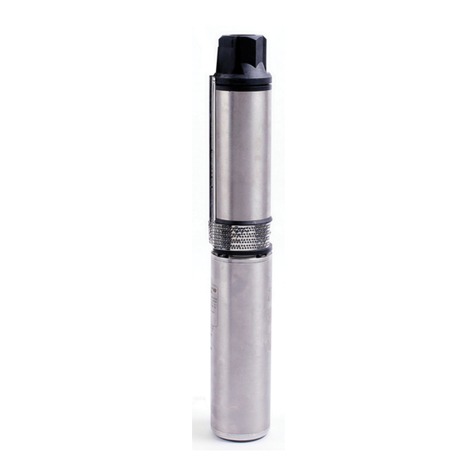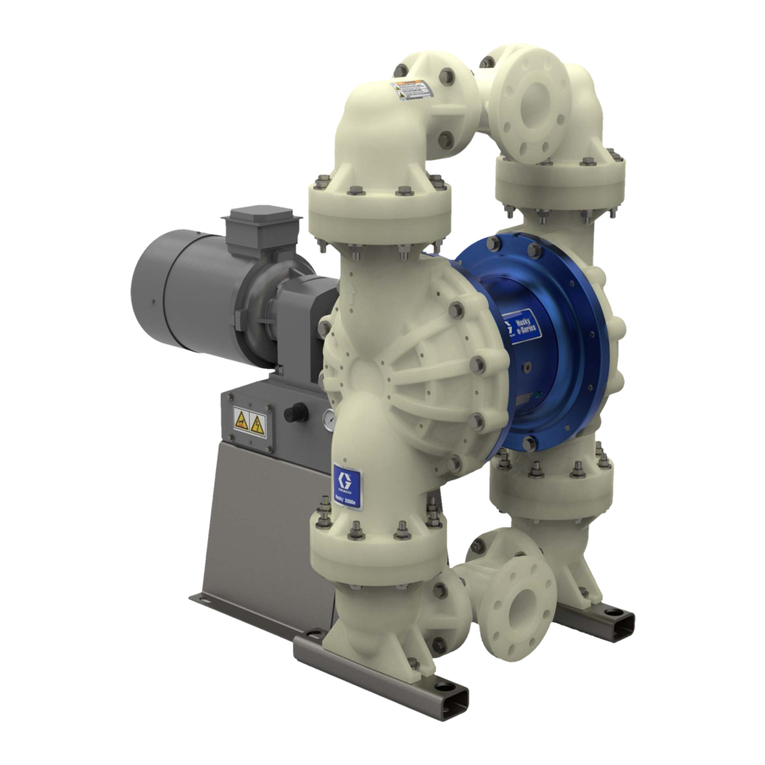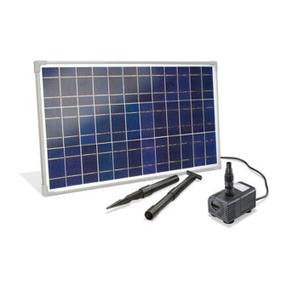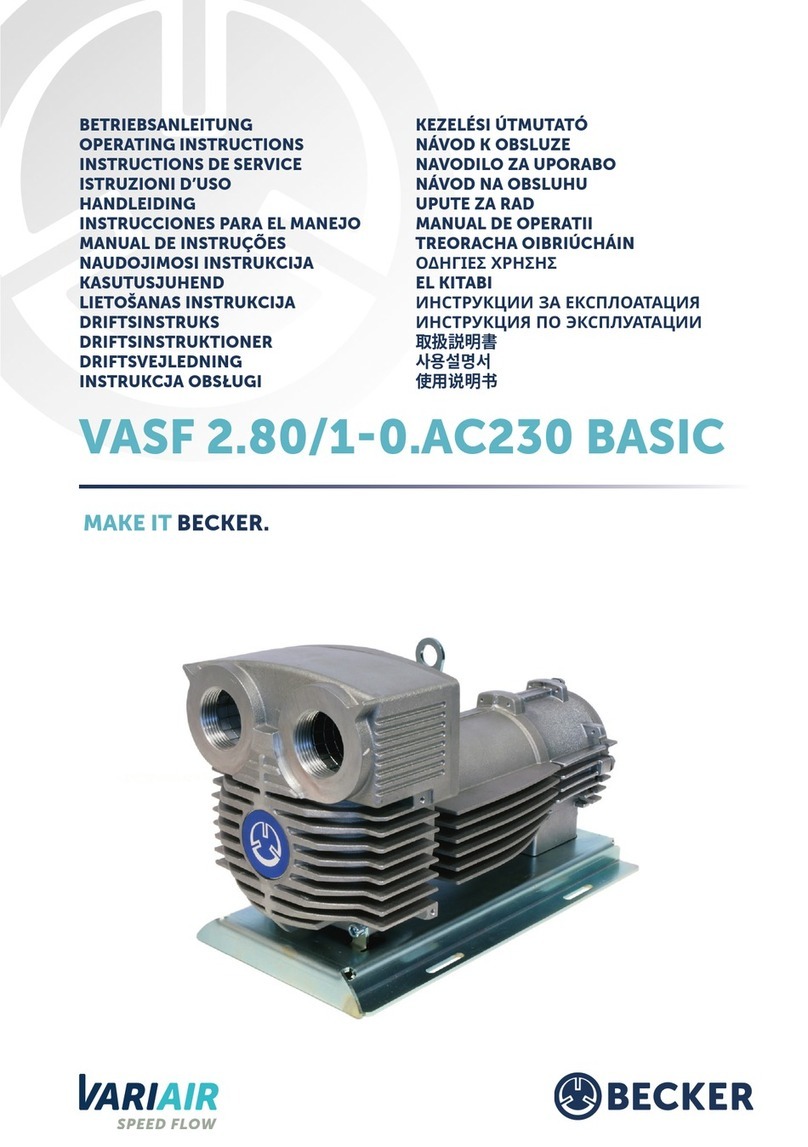
American Stainless Pumps, Inc.
www.aspumps.com 3
Rotation
The models SSP & SSPC will operate properly only in one direction (clockwise when looking from the motor end, and
counterclockwise when viewed from the pump end). Three phase motors can rotate in either direction. Single phase
motors normally only rotate in the proper direction. Operating the pump in reverse rotation may cause the
impeller to unscrew; breaking the shaft, damaging the pump and/or the motor, and voids the
warranty.
To check rotation, you must observe the motor shaft from the back of the motor.
1. Remove the cap or plug in the center rear of the motor to expose the back of the shaft. You do not need to remove
any screws on most motors.
2. Quickly switch on and off the motor and watch the shaft rotation as it slows down. Motor shaft should be turning in the
clockwise direction when viewed from the back of the motor.
3. If your three-phase motor is turning in the wrong direction, have a qualified electrician interchange two of
the three motor power wires. This should reverse the rotation. If a single-phase motor is turning in the wrong
direction, consult the motor manufacturer or American Stainless Pumps for instructions.
4. Check the rotation again. If it is correct, replace the end cover cap.
Operation
Pump must be completely primed before starting. Air in the suction lines or case must be vented.
Model SSPC Only: If the pump case is rotated so that the discharge nozzle is not vertical, an air pocket may form in
the case that will prevent the pump from operating properly. Loosen the case bolts until this air is removed for proper
operation. Be sure to retighten the bolts before operating the pump.
Do not operate the pump at or near zero flow. At zero flow, heat will build up in the pump and can cause extreme
damage to the pump, property damage and/or possible injury to operating personal.
Minimum flows of 5% of the pumps best efficiency point are recommended unless otherwise authorized by ASP.
Do not operate the pump beyond the flow rates shown on published curves.
Noisy pumps or the sounds of “pumping rocks” may be signs of cavitation or operation beyond the pumps capacity.
Check pump and motor for vibration. Vibration may be a sign of pipe strain, insufficient mounting or operation beyond
the pumps capacity.
The pump models SSP & SSPC are not designed for handling large amounts of solids. For the model SSP, spherical
solids size should not exceed the vane height of the impeller, less 0.060”. For the model SSPC, solid sizes must be
smaller than the opening at the discharge of the impeller.
Maintenance
There is no scheduled maintenance required. Close-coupled pumps have no bearings. Bearings in the motors are
permanently grease lubricated and cannot be re-greased. Mechanical seals will need to be replaced when leaking. O-
Rings may harden with age and may need to be replaced when they leak.
Motor Bearings and Pump Thrust: Model SSP Only
Open impellers generate significantly more thrust than do enclosed impellers. The Model SSP with a 4.38” diameter
impeller operating at 20 psig generates about 150 pounds of thrust. This thrust load is carried by the motor bearing. The
standard jet pump motor and the standard SSP motor uses as a front and rear bearing size 203 grease lubricated
bearing. This bearing has a B10 rated life of approximately 6,000 hours when operated with a thrust load of 150 pounds at
3500 RPM. This rating means that 10% of all bearings operated in this condition will fail within 6,000 hours of operation.
The average bearing life will be 3 to 4 times these 6,000 hours. Pumps and motors which operate intermittently, or only
operate 40 hours per week, will usually have acceptable bearing lives with the standard jet pump motor bearing. Pumps
that operate continuously, 24 hours per day, will have about 10% of their thrust bearings fail in the first year of operation.
For service applications that are critical, for installations that are difficult to access, or for pumps operating at
differential pressures above 25 psig, American Stainless Pumps recommends that motors with a larger thrust
bearings and higher load ratings be used. Consult factory for pricing and details.



